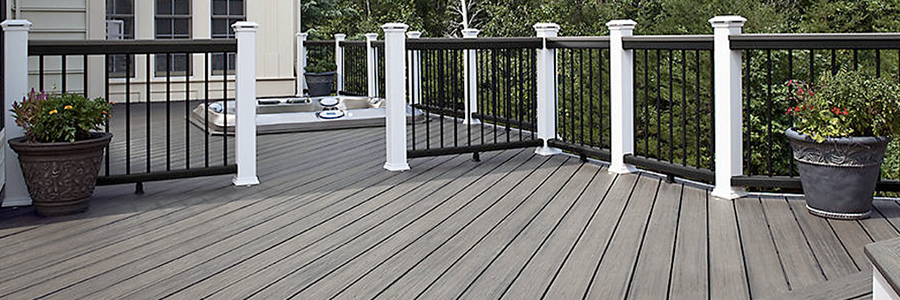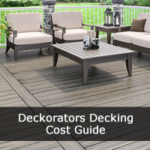Does a deck add value to a house, our guide will highlight the benefits and the deck types that will increase the value of your home. Investing in a 16-by-20-foot deck will increase your home resale value by 65% – 75%, according to the 2020 national Cost vs. Value report from Remodeling Magazine.
A wood deck addition, in particular, has a cost recovery rate of 73%. This means that a wood deck project that costs $14,500, for example, can be expected to increase your home’s resale value by approximately $10,600. A composite deck addition, on the other hand, has a 67% cost recovery rate, so a project that costs $20,000 (because composite is usually more expensive than wood) can be expected to increase your home’s resale value by approximately $13,400.
In this Cost Guide
Wait and Spend Less
There are two take-aways from the data on the ROI or resale value of a deck. First, since the recovery rates for decks are less than the cost of building them, you will lose money on your house if you decide to sell it immediately after having your deck installed. It would be in your best interest, then, to wait to sell your house three to five years after building your deck – or don’t build one at all if you’re in sell mode.
Secondly, the less money you spend on a deck project, the more resale value you will earn on it. Of course, we are not suggesting that you purchase the lowest quality materials or pay for substandard installation.
To hit the sweet spot in ROI, choose deck material at the low end or mid-point of what’s acceptable in your area.
For modest homes, a pressure-treated deck is ideal. For mid-priced homes, composite deck is better. Upscale homes need a deck made from exotic wood, aluminum or other high-end material.
Other Deck Benefits
Beautification
Aside from the fact that a deck will increase the monetary value of your home (that is, when the deck is properly cared for), it will also beautify your property, giving your home a welcoming aesthetic, and provide you with an open space for community enjoyment and outdoor relaxation.
Traction Near Decks
If you have an above-ground pool, you may already know the issues that can come from it being in the yard: the ground becomes muddy, the grass flattened, and the area slippery. Kids and adults alike can fall and get hurt. Installing a deck would provide secure footing, reducing the chances of tripping and injury. We’ve completed a comprehensive guide to pool decks and their cost.
Deck vs Patio
If you are debating having a patio or deck installed, it is important to know that while patios are less costly and easier to make than decks, their return on investment is about 55% in the 2019 Cost vs. Value report. You’ll get better ROI from a deck than a patio.
Are Building Codes Significant for Your Deck?
IRC and IRC Standards
Yes they are. Building codes serve a few functions: first, they ensure that builders, professional or DIY, maintain integrity in their work. Building inspectors judge the quality of a builder’s work using the International Residential Code (IRC) standards—and/or the local codes of your specific area, which are based off the IRC.
The IRC furnishes specific measurements that are required for every aspect of a building project. If a builder has taken short cuts and/or has poorly installed your deck, the building inspector will not permit the builder to finish the project until all the issues have been fixed.
The IRC standards also ensure safety. The International Code Council (ICC), through its consensus code development process, synthesizes the data from hundreds of building and safety experts across North America to determine what building practices work. As a result, the codes are updated every three years, refining the building process to be smarter and more concise while also utilizing new and necessary technologies in order to retain the health and safety of residents and the public.
Deck standards & Codes
Having your deck built to code makes it more likely you’ll sell your home – and eliminates potential hassles later when the homeowner discovers the deck doesn’t meet code. Listing associations require homeowners to disclose any house modifications or additions before putting a house on the market.
If the modifications or additions were done without a permit, and code wasn’t followed, you may be required to demolish the addition or pay for new modifications (that are up to code). It’s a rare problem, but worth avoiding.
Legal proceedings that will occur if a deck is not built up to code:
- A written notice of violation will be given to the owner of the property, the owner’s agent, or the person doing the work.
- If the notice is not complied with, the project can be stopped by law, given as another written notice.
- The structure can be removed, taken down, or made safe (that is, made up to code), depending on what is deemed necessary by local jurisdiction.
- Legal fees may be issued.
- See these slides, made by the ICC, for more information.
For more on deck and hand/deck railing codes, see our article here.
Creative Liberties
Using decking material that suits the area does not mean that you have to kick creativity by the wayside. In fact, as we stated in our deck railing codes article, there are other ways to make your deck distinct. Here are ideas:
Deck style
You can choose from a variety of deck appearances that fit your preferences and home. For instance, you can decide on:
- A ground level deck or an elevated deck. Having a ground level deck will allow for a cozy gathering spot while being the cheaper of the two project options. An elevated deck can create space to separate a dining area and a fireplace.
- A curved deck. The curvilinear aesthetic breaks from traditional deck appearances, presenting a unique deck layout.
- A hexagon or octagon perimeter. Perhaps you do not want a curved deck or a traditional rectangular layout. As an alternative, you can design a hexagonal (six-angles) or an octagonal (eight-angles) perimeter for your deck, capturing a more modern artistic flavor. Keep in mind, however, that decks with unusual shapes will cost more since both the layout and the deck board cutting will take more time.
- A herringbone surface design. This surface design can be compared to a zipper: it is the intersection of two opposing diagonal decking patterns that meet in the center of the deck.
- A decking inlay. With this, you will not just have a deck surface pattern, but you will also have an image/shape that breaks the monotony of the pattern and makes a statement. You can use a combination of contrasting colors and angles for your inlay.
Deck railing
Handrails or deck railing do not have to be dull. Here’s a brief list of different types to choose from (but keep in mind that some railing designs only work with a wider deck or a specific deck style):
- Curved Railing: This can be used for the deck itself or for a staircase on an elevated deck. It provides a different aesthetic from the traditional square railing design.
- Aerial Railing: For dual-leveled decks, aerial railing extends from the top level to the bottom, encompassing a seating area or fireplace.
- Cocktail Railing: A wider, flatter surface, this type of railing allows for food, drinks, and other handheld items to rest on top of it without the concern for falling off.
- Glass Balusters: Your deck railing can be made to hold this type of baluster, which will allow for an unobstructed view.
- Baroque Balusters: A European design, this type of baluster will distinguish your deck from those in the neighborhood.











